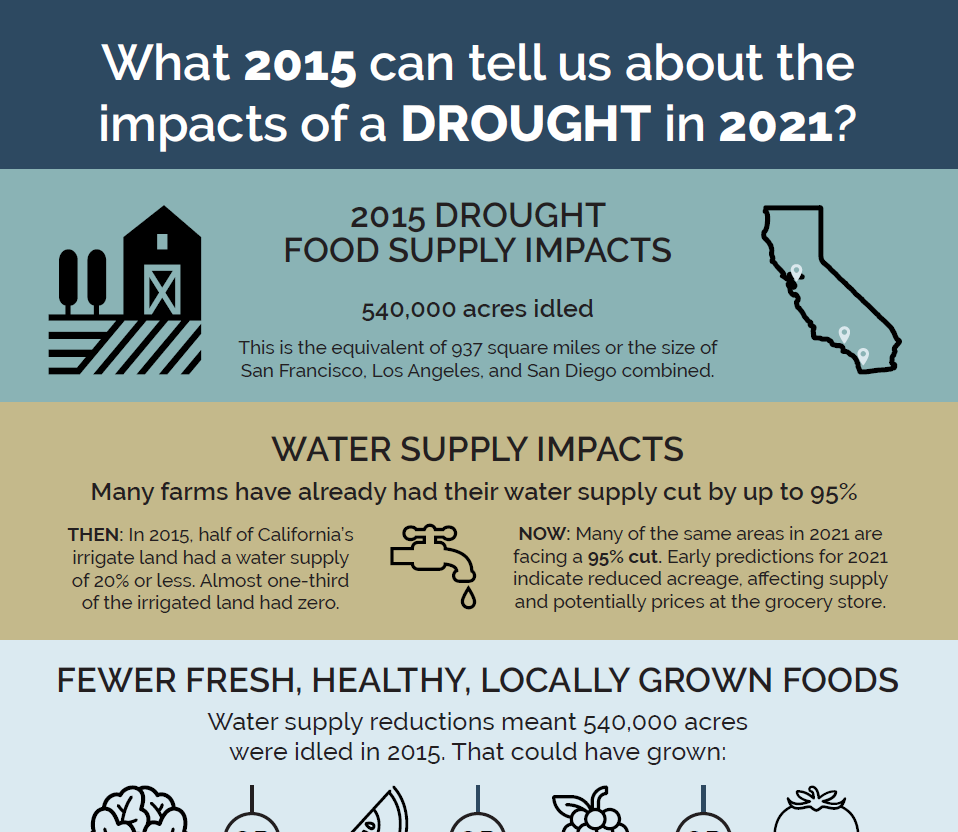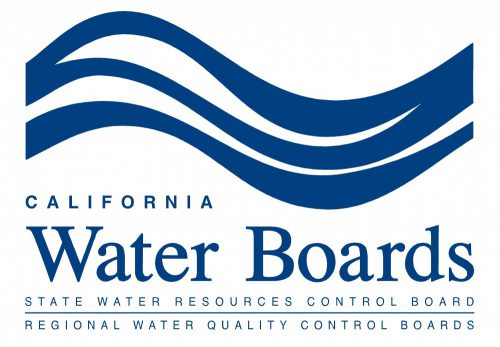So here we are again, California. We’re coming through another dry year and watching the sky, hopeful that Mother Nature will give us a reprieve. We’ve all had a bad year, but everyone needs to buckle up because some of the biggest consumer impacts are just now showing up. Farmers, many of whom received none […]
What can the 2015 drought tell us about the impacts of a drought in 2021?
Conflict to Collaboration
Conflict to Collaboration A regulatory approach has dominated water management in California over the past three decades. This was a significant shift from the development phase of California’s water system, as described by water policy expert Tim Quinn, former executive director of the Association of California Water Agencies. Many believe that policy-makers and water users […]
State Water Board Action Threatens Jobs, Food Supply
State Water Board Action Threatens Jobs, Food Supply In a stunning move that could wreak havoc on California farms, the broader California economy and our food supply in a time of national crisis, the California State Water Resources Board is trying to use regulatory maneuvers to cut this year’s water supply to California farms. In […]
Moving Forward With Modern Science and Smart Management- Biological Opinions in 2020
New Federal Biological Opinions Utilize the Latest Science to Benefit Fish and Other Water Users One thing all Californians know for certain is that our current system of managing water isn’t working for anyone. Over the past decade, struggling fish populations have continued to decline, farms have been forced to fallow land, and cities and […]
Countdown: 4 Days to Drought
Countdown: 4 Days to Drought On Wednesday, the State Water Board will vote to redirect enough water in the system to irrigate over 200,000 acres of farmland or meet the annual domestic needs of 2 million people every year. If approved, this action will lead to one of the most preventable droughts California has ever faced. Who […]
6 Things You Should Know About the Recent Presidential Order Streamlining Water Delivery
6 Things You Should Know About the Recent Presidential Order Streamlining Water Delivery On Friday, October 19, President Trump signed an order streamlining the federal process that governs much of California’s water-delivery system. While this is definitely great news for California farmers, it’s also good news for all California water users. Let’s look at a […]
Salmon need help in California, but what kind?
Salmon need help in California, but what kind? Salmon need help in California. Unfortunately, L.A. Times opinion writer, Michael Hiltzik, isn’t doing them any favors by furthering the notion that more water in the Delta’s sterile waterways is the solution. Hiltzik completely ignores the economic consequences that have devastated San Joaquin Valley farms, farmworkers, and […]
The solution to pollution is not, in fact, dilution.
The solution to pollution is not, in fact, dilution. While a catchy phrase, scientific and other experts generally agree that the “solution to pollution is dilution” approach leaves much to be desired. Relying on dilution to solve the Delta’s water quality problems is at best wasteful of this precious resource, and at worst destructive to […]
The System is Broken
Over the past 25 years there has been considerable controversy over allocation of the Bureau of Reclamation’s Central Valley Project (CVP) water supplies. Allocation amounts vary wildly with one routinely getting 100% while others receive dramatically less. Water project opponents say that’s the result of our water rights system but those rights haven’t changed and […]

